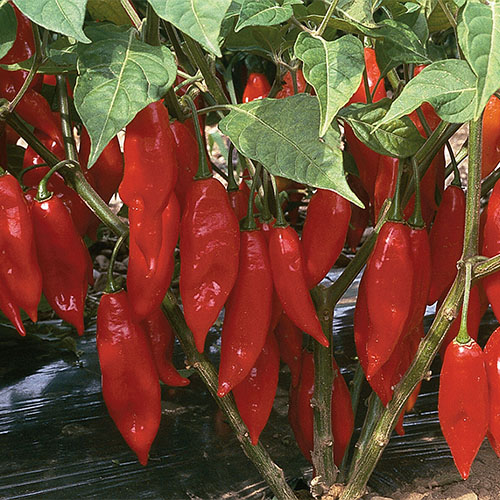Hot and sweet peppers (Capsicum sp.). Varieties are organized by approximate heat level as determined by Scoville Heat Units (SHU), where 0 is no heat (a sweet pepper), 6,000 a typical jalapeño, and 250,000 is the heat of a typical habanero. For a detailed description of this system and more examples, visit the Scoville Scale website, though we use slightly different terminology to describe the same SHU levels. The scale linked was written by real pepper-heads who eat scorchingly hot peppers for fun. Our descriptions are aimed at a less hardcore taste!
NB: chili peppers naturally vary a little in heat level by individual plant and different growing conditions. The levels shown here are averages, but your plants may not exactly match these numbers, though in most cases any variation is minor.
All peppers are $6 per plant.
Sweet peppers
New! Bella Italia
Capsicum annuum. According to original grower Frank Morton, "These are deep dark red Italian-type peppers, with a ruffled surface and [thin] walls. When sliced thinly these make a striking vermillion 'vegetable fettuchini' that can be quickly sauteed or stir fried for topping dishes, or used fresh for salads."
- SHU: 0
- Variety origin: USA
- Date of origin: 2015
- Status: Open pollinated (OSSI pledged)
- First grown by us: 2023 trial variety
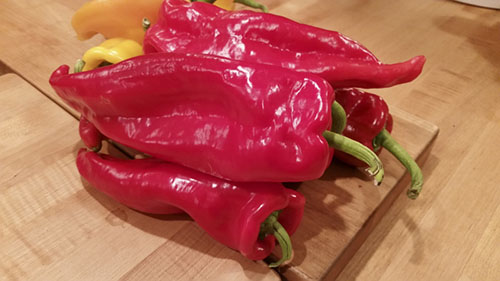
New! Golden Apple
Capsicum annuum. According to original grower Frank Morton, "[a] nearly round little pepper that fits in the palm of your hand. Makes a good snack, maybe the right size to entice kids to take up sweet peppers as finger food."
- SHU: 0
- Variety origin: USA
- Date of origin: 2019
- Status: Open pollinated (OSSI pledged)
- First grown by us: 2023 trial variety

Mild to Medium peppers
New! Biquinho (Yellow)
Capcisum chinense. Though small, these Brazilian chilis with a "beak" on the end offer a lot of citrusy, fruity flavour. Despite being from the same species as scorching hot habaneros, biquinho peppers have only a mild heat, less than the average jalapeño. Good for fresh eating and traditionally pickled whole in their native Brazil.
- SHU: ≈ 750
- Variety origin: Brazil
- Date of origin: Heirloom
- Status: Open pollinated
- First grown by us: 2023 trial
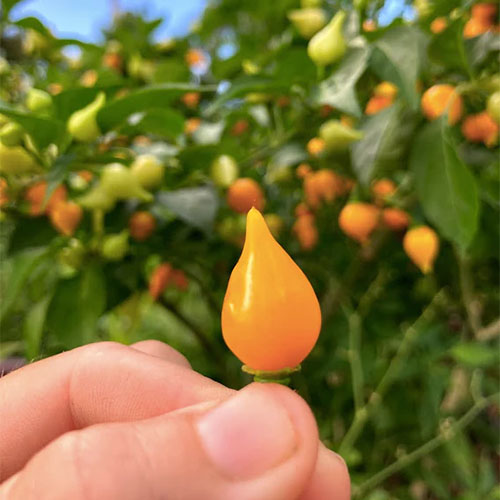
Blended Lemon
Capsicum baccatum. Sunny yellow, thin-walled pods have a citrusy, tropical flavor characteristic of many Aji peppers, but a milder heat level. Can be a little on the slow side to ripen; we recommend growing these in the hottest, sunniest spot you've got. In a pot on south-facing deck, they produced very well.
- SHU: ≈ 5,000
- Variety origin: Unknown
- Date of origin: Unknown
- Status: Open pollinated
- First grown by us: 2022
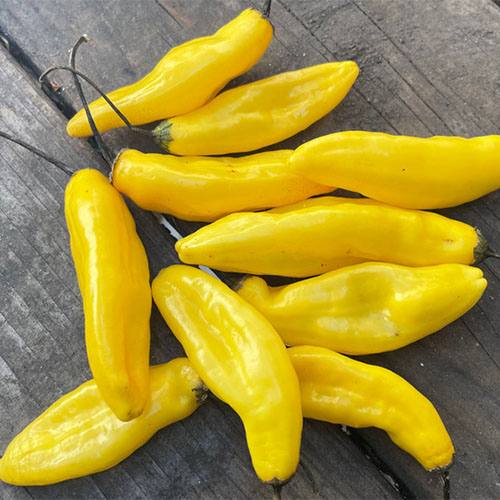
New! Elinitsa Chili
Capcisum annuum. Per seed source Truelove Seeds, "These prolific hot peppers [...] are a long-standing heirloom which has been grown in this village for more than 95 years. [S]quat extremely productive plants, so they grow very well in fairly small pots and urban spaces. Starting off a yellow color, their fruits ripen to a deep red and they grow vertically up towards the sky, making them easy to pick. They mature before jalapenos, habaneros, and most other hot peppers. Moderately spicy and delicious at any phase of ripening, with an excellent rich flavor that goes much beyond the spice."
- Variety origin: Greece
- Date of origin: Early 20th century
- Status: Open pollinated
- First grown by us: 2023 trial
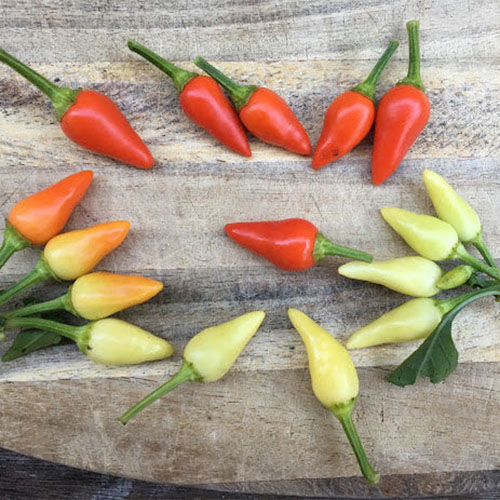
Sold out! Flaming Flare F1
Capcisum annuum. This flaming red Fresno-style chili offers sweet, mildly hot fruits that are great fresh, in stir fries, or for making hot sauce. AAS winner.
- SHU: ≈ 1000
- Variety origin: USA
- Date of origin: 2015
- Status: F1 hybrid
- First grown by us: 2023 trial

Hong-Gochu (홍고추)
Capcisum annuum. Long and slender, with a glossy skin, these mild Korean chilis can be eaten green, when they are a bit tangier and spicier, or left to ripen to a brilliant scarlet red, when they become very sweet and only slightly hot. Versatile, ideal for fresh garnish, stir fries, drying. The classic chili for kimchi and gochugaru. One of the most used chilis in our kitchen.
- SHU: ≈ 1000
- Variety origin: Korea
- Date of origin: Heirloom
- Status: Open pollinated
- First grown by us: 2022
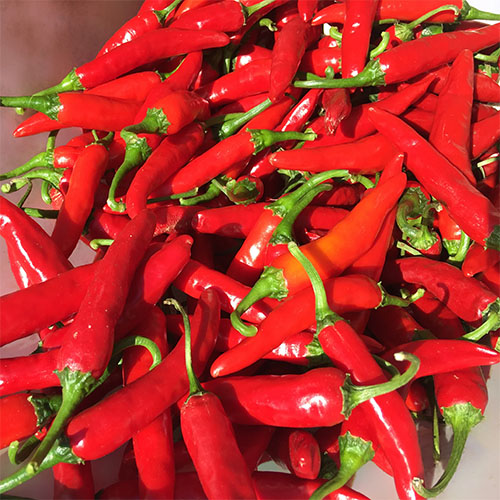
Jalapeño
Capsicum annuum. When you think of hot peppers, there's a good chance the jalapeño is the first thing to mind. Originally hailing from the state of Veracruz in Mexico, this heirloom chili has a bright, grassy flavour that makes it versatile in cooking; fresh, stuffed, pickled, they're all good! Starts green before ripening further to red.
- SHU: ≈ 5,000
- Variety origin: Mexico
- Date of origin: Heirloom
- Status: Open pollinated
- First grown by us: 2020
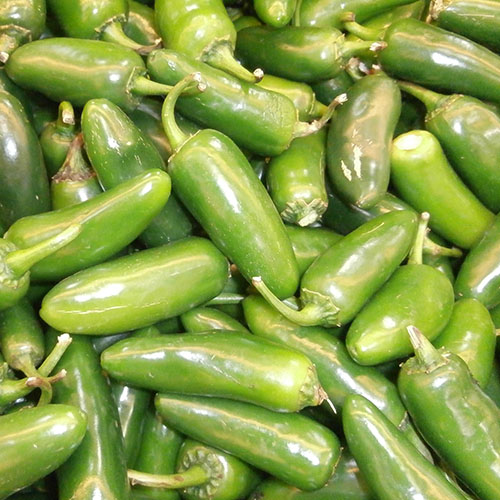
New! Shinhong Cheongyang Gochu - 청양고추(신홍)
Capsicum annuum. Original bred by crossing existing mildly spicy Korean red peppers from Jeju Island to the much hotter Thai chilis, this Korean staple packs a nice kick, around the same as a serrano pepper. Can be picked green, when its flavour is sharper and spicier, or allowed to ripen red, when it becomes sweeter and a bit more mild. Thin walls make it easy to air dry for preserving through the winter.
- SHU: ≈ 10,000
- Variety origin: Korea
- Date of origin: 10th century
- Status: F1 hybrid
- First grown by us: 2023 trial
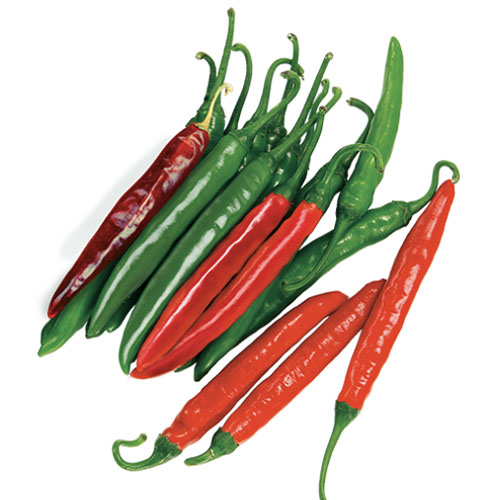
Hot peppers
New! Datil
Capsicum chinense. This golden orange beauty packs a punch, but offers some fruity sweetness in exchange. Every bit as hot as the Florida summer, where they originate, the Datil is beloved for hot sauces, spicy salsas, or anything else that you want to add a fiery burst of flavour to.
- SHU: ≈ 200,000
- Variety origin: USA
- Date of origin: Heirloom
- Status: Open pollinated
- First grown by us: 2023
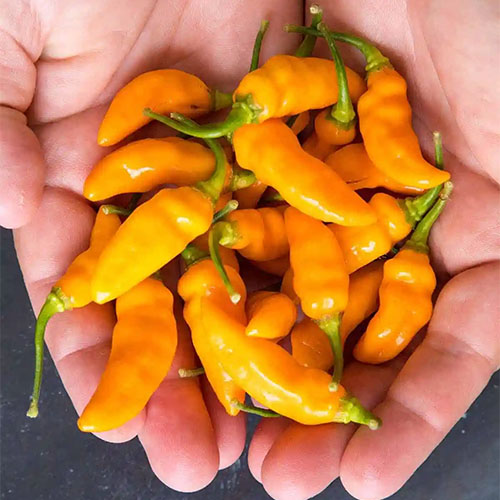
Hot Paper Lantern
Capsicum chinense. This habanero-type chili with a sweet, slightly smokey flavour, offers a big kick. Though most C. chinense peppers require a long season and may struggle to ripen in Nova Scotia, Hot Paper Lantern is early and productive, pumping out loads of thin-walled, crinkly red chilis from August until frost for us.
- SHU: ≈ 225,000
- Variety origin: USA, originally bred by Janika Eckert
- Date of origin: 2000s
- Status: Open pollinated
- First grown by us: 2022
